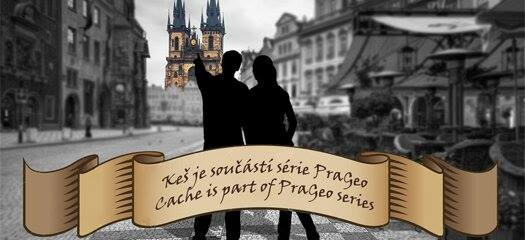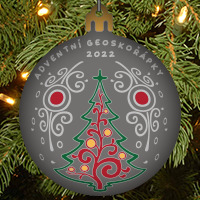|

 Nárožní kameny, neboli nákolníky chránily v minulosti zdiva domů, aby je svými koly neponičily kočáry, které na rozdíl od aut nebyly tak dobře ovladatelné. Tato Wherigo keš Vás seznámí s nejzajímavějšími pražskými nákolníky. Nárožní kameny, neboli nákolníky chránily v minulosti zdiva domů, aby je svými koly neponičily kočáry, které na rozdíl od aut nebyly tak dobře ovladatelné. Tato Wherigo keš Vás seznámí s nejzajímavějšími pražskými nákolníky.
 In the past, corner stones or bollards protected the walls of houses so that carriages, which, unlike cars, were not so easy to steer, would not damage them with their wheels. This Wherigo will show You the most interesting bollards in Prague. In the past, corner stones or bollards protected the walls of houses so that carriages, which, unlike cars, were not so easy to steer, would not damage them with their wheels. This Wherigo will show You the most interesting bollards in Prague.

 Pražské nákolníky Pražské nákolníky
V metropoli jsou ochranné patníky od barokních až po novodobé a s jejich stářím souvisí materiál ze kterého jsou zhotoveny. Ty nejstarší jsou z pískovce, použit byl i mramor, později žula a naposled travertin a železo. Výšky i půdorysné rozměry patníků existují v řadě variant, ale největší variabilnost je v jejich tvarech. Jsou to koule, polokoule, válce, kužele, jehlany špičaté i komolé a různé kvádry. Mohou být z jednoho dílu, dvoudílné i složené z více stupňů. Ochranné patníky se také liší opracováním a zdobením.
Patníky uspořádané do řad před průčelím paláců měly více funkcí. Chránily před poškozením stěny průčelí, patníky na koncích řad chránily nároží budov a patníky před vjezdy též sloupky vrat a portálů. Řady ochranných patníků v pražském prostředí můžeme vidět před Buquoyským velkým palácem na Velkopřevorském náměstí (Francouzské velvyslanectví), Lobkovickým palácem ve Vlašské ulici (Německé velvyslanectví), Toskánským palácem v horní části Hradčanského náměstí (novodobé patníky). Na Hradčanském náměstí je pak ještě jedna řada patníků, a to obklopujících mariánský sloup, postavený zde kolem roku 1730. Dvě krátké řady patníků jsou též za vjezdem do Platýzu z Uhelného trhu. Některé z nich stojí v koutech, kde ochranu stěny nemohly plnit. Patrně zde sloužily kromě ochrany stěny také k uvazování jezdeckých koní. V předchozím odstavci uvedené řady patníků jsou kamenné – převážně pískovcové.

 Staré Město Staré Město
Patníky jsou rozesety hlavně po Malé Straně a Starém Městě. Vysoké a často pěkně zdobené jsou patníky chránící rohy budov. Menší a tvarem jednoduché patníky jsou v párech u vjezdů do dvorů budov. Ty jsou dnes nejvíce ohroženy, protože vjezdy jsou často úzké a moderní auta příliš velká.
V historickém centru Prahy jsou před některými paláci k vidění patníky uspořádané do řad. Jde například před Buquoyským velký palácem na Velkopřevorském náměstí, Toskánským palácem v horní části Hradčanského náměstí nebo Lobkovickým palácem ve Vlašské ulici.
Někde v Praze jsou patníky umístěny zdánlivě nelogicky, už při prvním pohledu je zřejmé, že nemohly plnit ochrannou funkci. Je možné, že takové patníky sloužily k uvazování koní.
Někde jsou patníky k vidění ve velmi úzkých uličkách, ve kterých se povozy dostávaly do těsné blízkosti domů. To je třeba případ ulic Řetězová a Týnská na Starém Městě.
Patníky jsou k vidění i oblastech rozšířeného centra, na Žižkově nebo v Karlíně. V době instalace patníků na tato území se však jednalo o pražské periferie.

 Prague Bollards Prague Bollards
There are protective bollards in the metropolis from baroque to modern, and their age is related to the material from which they are made. The oldest ones are made of sandstone, marble was also used, later granite and finally travertine and iron. The heights and floor plan dimensions of bollards exist in a number of variants, but the greatest variability is in their shapes. They are spheres, hemispheres, cylinders, cones, pointed and truncated pyramids and various blocks. They can be one-piece, two-piece or multi-tiered. Protective bollards also differ in processing and decoration.
The bollards arranged in rows in front of the facades of the palaces had several functions. They protected the facade wall from damage, the bollards at the ends of the rows protected the corners of the buildings, and the bollards from the entrances also protected the pillars of the gates and portals. Rows of protective bollards in the Prague environment can be seen in front of the Buquoy Grand Palace on Velkopřevo Square (French Embassy), the Lobkovic Palace in Vlašská Street (German Embassy), the Tuscan Palace in the upper part of Hradčanské Square (modern bollards). On Hradčanské náměstí there is another row of bollards surrounding the Marian column, built here around 1730. Two short rows of bollards are also behind the entrance to Platýz from Uhelné trhu. Some of them stand in corners where the walls could not fulfill their protection. Apparently, in addition to protecting the wall, they were also used for tying riding horses. The rows of bollards mentioned in the previous paragraph are made of stone - mainly sandstone.

 Old Town Old Town
The bollards are mainly scattered around Malá Strana and the Old Town. Tall and often beautifully decorated are the bollards protecting the corners of buildings. Smaller and simple-shaped bollards are in pairs at the entrances to the courtyards of the buildings. These are the most at risk today because driveways are often narrow and modern cars are too big. In the historic center of Prague, bollards arranged in rows can be seen in front of some palaces. It goes, for example, in front of the Buquoy Grand Palace on Velkopřevo Square, the Toskánská Palace in the upper part of Hradčanské Square or the Lobkovic Palace in Vlašská Street.
Somewhere in Prague, bollards are placed seemingly illogically, it is obvious at first sight that they could not fulfill a protective function. It is possible that such bollards were used to tie horses. In some places bollards can be seen in the very narrow streets in which the carriages used to get very close to the houses. This is, for example, the case of Řetězová and Týnská streets in the Old Town. Bollards can also be seen in the areas of the extended center, in Žižkov or in Karlín. However, at the time the bollards were installed in these areas, they were the outskirts of Prague.

 Jak na keš? Jak na keš?
Vaším úkolem bude najít zajímavé nákolníky na Starém Městě. Všechny jsou vidět na obrázku níže, pro zvětšení na něj stačí kliknout. U každého nákolníku zjistíte indicii A až I. Indicie pak dosadíte do vzorce pro cartridge a můžete vyrazit pro finálku.
D se nenachází na území starého města!

Keš se nenachází na výchozích souřadnicích, jedná se o reverse wherigo. Autorem této cartridge je -Waldmeister-. Cartridge vám řekne jen jak daleko se od finálních souřadnic nacházíte, směr si musíte zvolit sami. Až budete ke keši blíž než 25 metrů, ukáží se vám finální souřadnice.
Pro úspěšný odlov keše si musíte ZDE stáhnout cartridge a do ní zadat kód -

A - U patníku se podívej k nebi. Ze střechy visí -
Postava muže = 4
Divoká šelma = 5
Vlajka = 7
B - Počet květů na zdi nad nákolníkem.
C - Počet všech sloupů na čelní straně budovy.
D - Z počtu všech kovových patníků odečti 27.
E - Počet postav v sošce nad patníkem.
F - Počet oblouků na stěně nalevo od patníku.
G - Číslo na modré tabulce vpravo od patníku.
H - Přímo nad patníkem je číslo 41(H).
I - Vpravo od patníku je v dolní části cedule nápis P1 - 0(I)26.

 How to find the cache? How to find the cache?
Your task is to locate interesting bollards in the Old Town. All of them can be seen in the image below, just click on it to enlarge it. At each bollard location, you will find clues A to I. You will then insert the clues into the formula for the cartridge and you can go for the final.
D is not in the Old Town area!

The cache is not located posted coordinates, this is a reverse wherigo. The author of this cartridge is -Waldmeister-. The cartridge will only tell you how far you are from the final coordinates, you have to choose the direction yourself. When you are closer than 25 meters to the cache, you will be shown the final coordinates.
To successfully find the cache, you need to download the cartridge HERE and enter the code into it -

A - At the bollard location, look at the sky. What is hanging from the roof? -
Male figure = 4
Wild beast = 5
Flag = 7
B - Number of flowers on the wall above the bollard.
C - Number of all columns on the front side of the building.
D - Subtract 27 from the number of all metal bollards.
E - Number of persons in the statue above the bollard.
F - Number of arches on the wall on the left from the bollard.
G - Number on the blue table on the right from the bollard.
H - Directly above the bollard is the number 41(H).
I - On the right side of the bollard, in the lower part of the sign, there is a sign P1 - 0(I)26. 
|